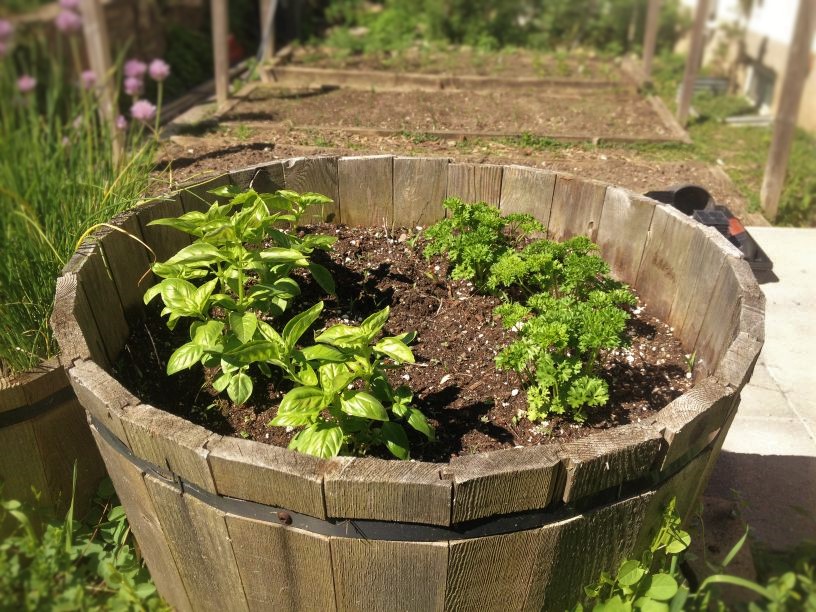Gardening made easy, thanks to Sarah:
Think you don’t have the room to plant a vegetable garden? Think again. While most of us picture an expansive plot of land with rows upon rows of green, this doesn’t necessarily have to be the case. Many families in urban and rural settings have discovered how easy it is to grow your own fruits and vegetables while confined to a small yard, or even no yard at all!
Believe it or not, when done with care and consideration for growing requirements, almost any fruit or vegetable plant can thrive and produce abundantly in containers. The most important thing to remember is this: always use a pot or container that is large enough for the plant (or plants) in question to never become root bound. Unlike flowering plants, many edibles do not take well to transplant once they have matured and begun bearing fruit. We’ll discuss more on that later.

So where to start? Firstly, consider the space you have and the size and type of container you’ll be using. As an introduction to growing edibles in containers, we will focus today on hanging baskets. Check back again for part two and three; ground containers and vertical planters, and part four; companion planting.
Strawberries
In our area, one of the most commonly found hanging edible that can be found in most garden centers is the strawberry. Compact strawberry plants are the most desirable, as are ones that do not produce as many runners or “baby” plants (think spider plants). By trimming any runners, and taking care to replant strawberries in fresh soil each fall, you can enjoy these hanging delights for several years in a row.
Peppers and Tomatoes
Hanging baskets are also amazing for tomato and pepper plants, though not in the way you might think. We have experimented with growing several varieties in hanging baskets, and have found great success in growing them… upside down. By taking regular plastic hanging planters and cutting small holes in the center, the seedlings of tomatoes and peppers can be carefully pulled down in to place, with the greens hanging towards the ground and the roots still in the planter. Once the basket is filled with soil, the roots have ample room to spread and will secure the plan in place once fruit begins to form. Though this works well for most pepper varieties, tomatoes must be chosen carefully. Choose dwarf or varieties that produce smaller fruit, such as Roma, Plum, or Cherry. Larger varieties such as Beefeater are unsuitable as they can cause too much stress to the stalk of the plant.
Green Beans and Peas
Similar to the planting of tomatoes and peppers, wax beans, peas and other legumes can also be planted upside down in planters. With vining plants such as these, growing in hanging planters allows the vines to grow straight and true, absorbing lights and nutrients from the air and allowing for easier picking at harvest.
Herbs
Because of their mostly compact nature, kitchen herbs make for perfect container gardening of any sort, and using hanging baskets can add another level of versatility. Why not hang them outside your kitchen door or window for easy access in the summer, and then in-doors to continue the fragrant bounty during the winter months? You can also experiment by planting only perennials; such as mint, oregano, thyme, chives and rosemary. Or try planting annuals such as basil, dill or parsley and change up the varieties each season.
Edible Flowers
If wish to grow edibles but are unwilling to compromise on using your hanging baskets bringing a pop of colour to your outdoor décor, don’t despair. There are many beautiful flowing plants that will grow well in hanging baskets, yet are tasty and nutritious too! Perhaps most widely used are nasturtiums, which produce vivid yellow, orange and red flowers, and have the added benefit of both the blossoms and leaves being edible. Giving a sharp, peppery taste they are perfect in fresh salads, stir-fry’s or as garnish.
This list is just the beginning of the many ways you can utilize hanging baskets to grow your fruits and vegetables in small spaces. Check back again soon when we discuss unexpected plants that can be planted on ground containers and pots!


